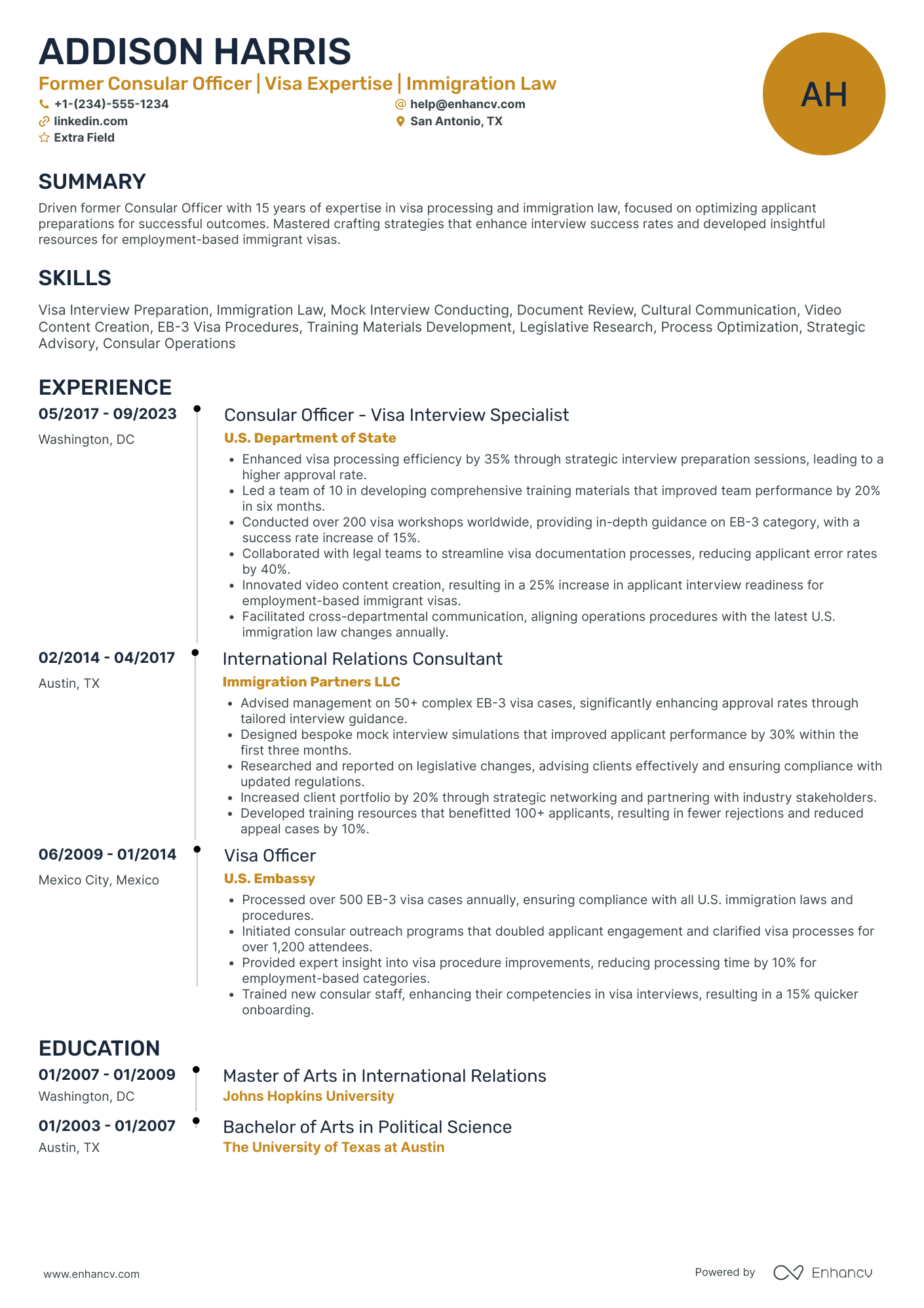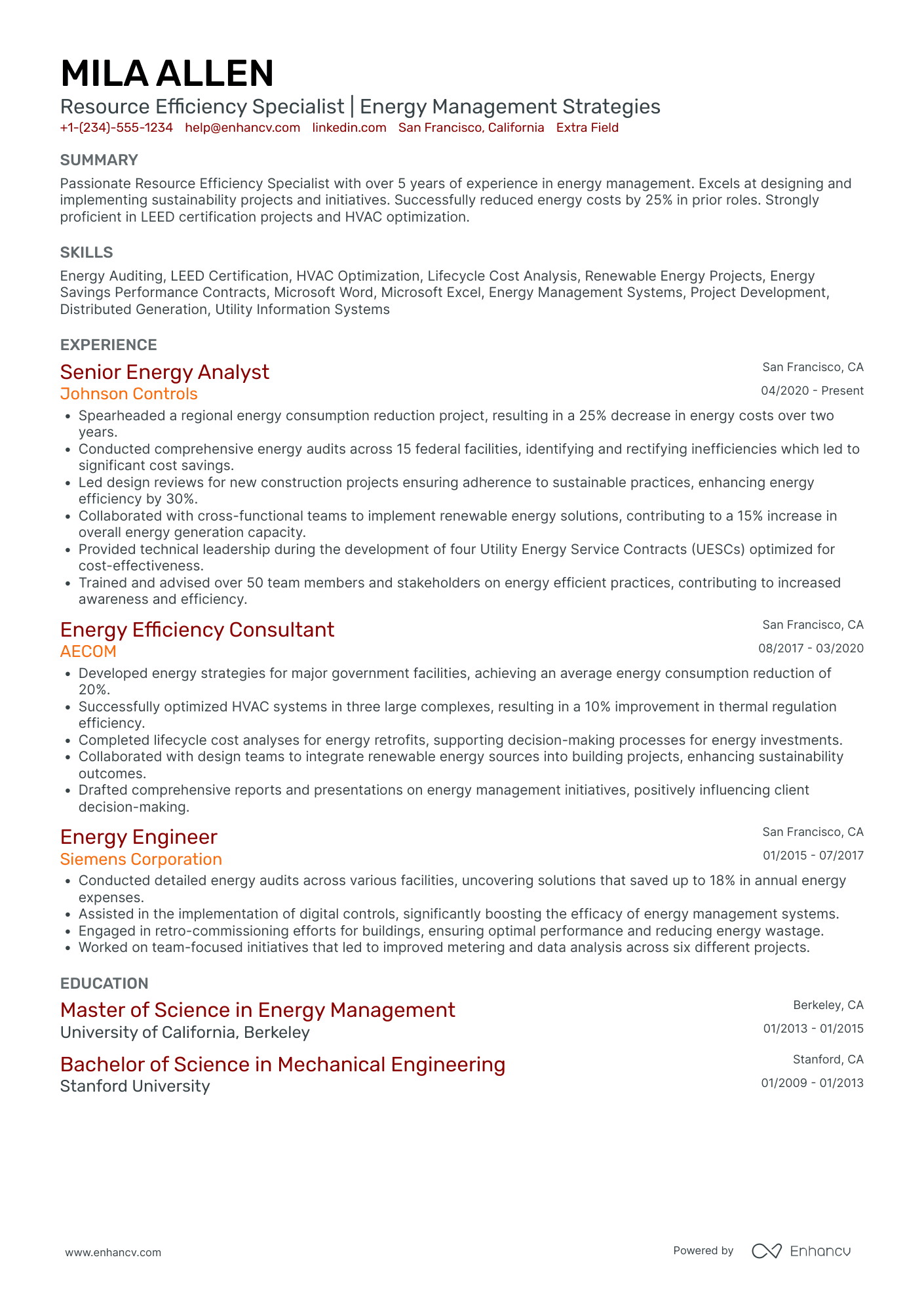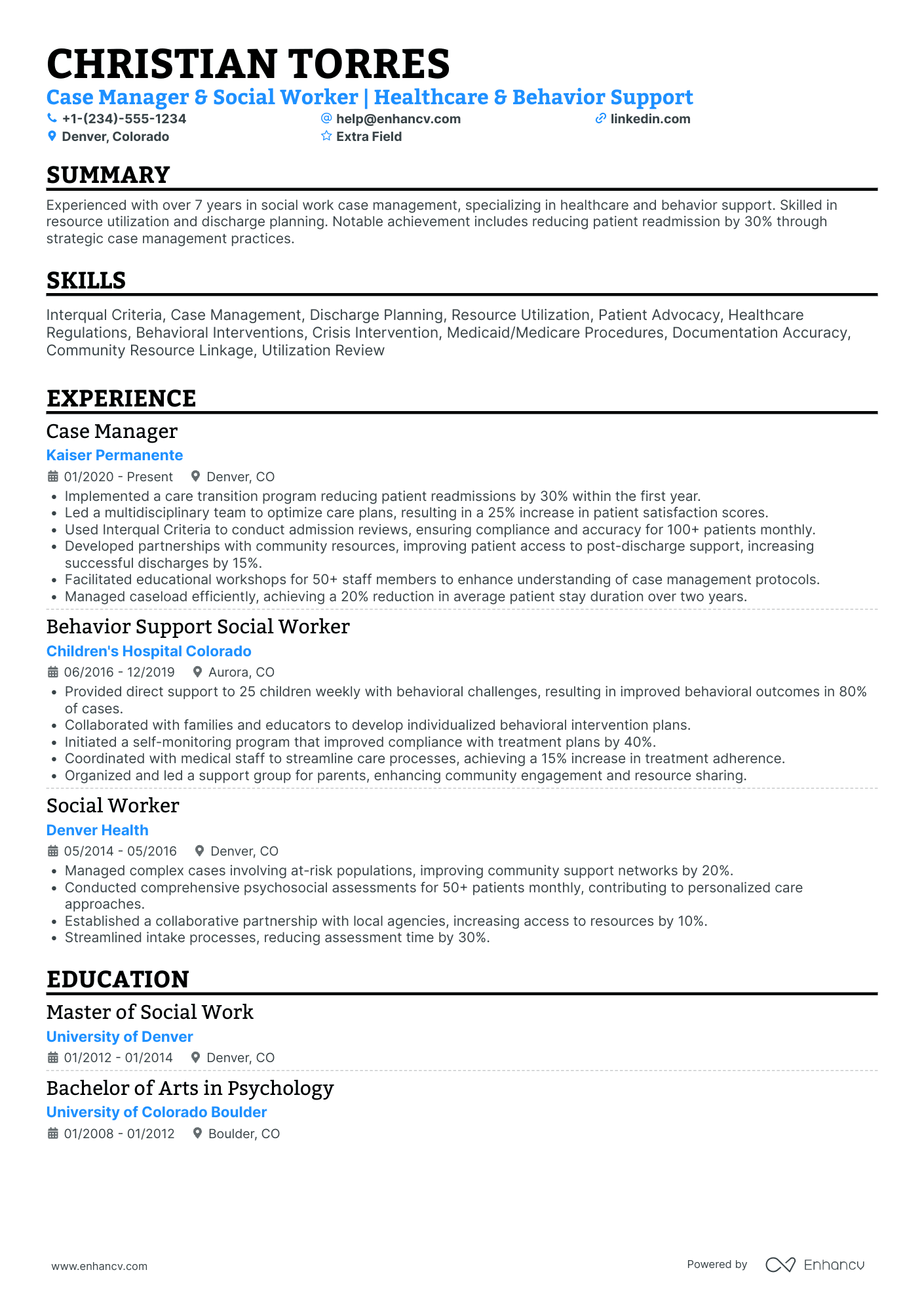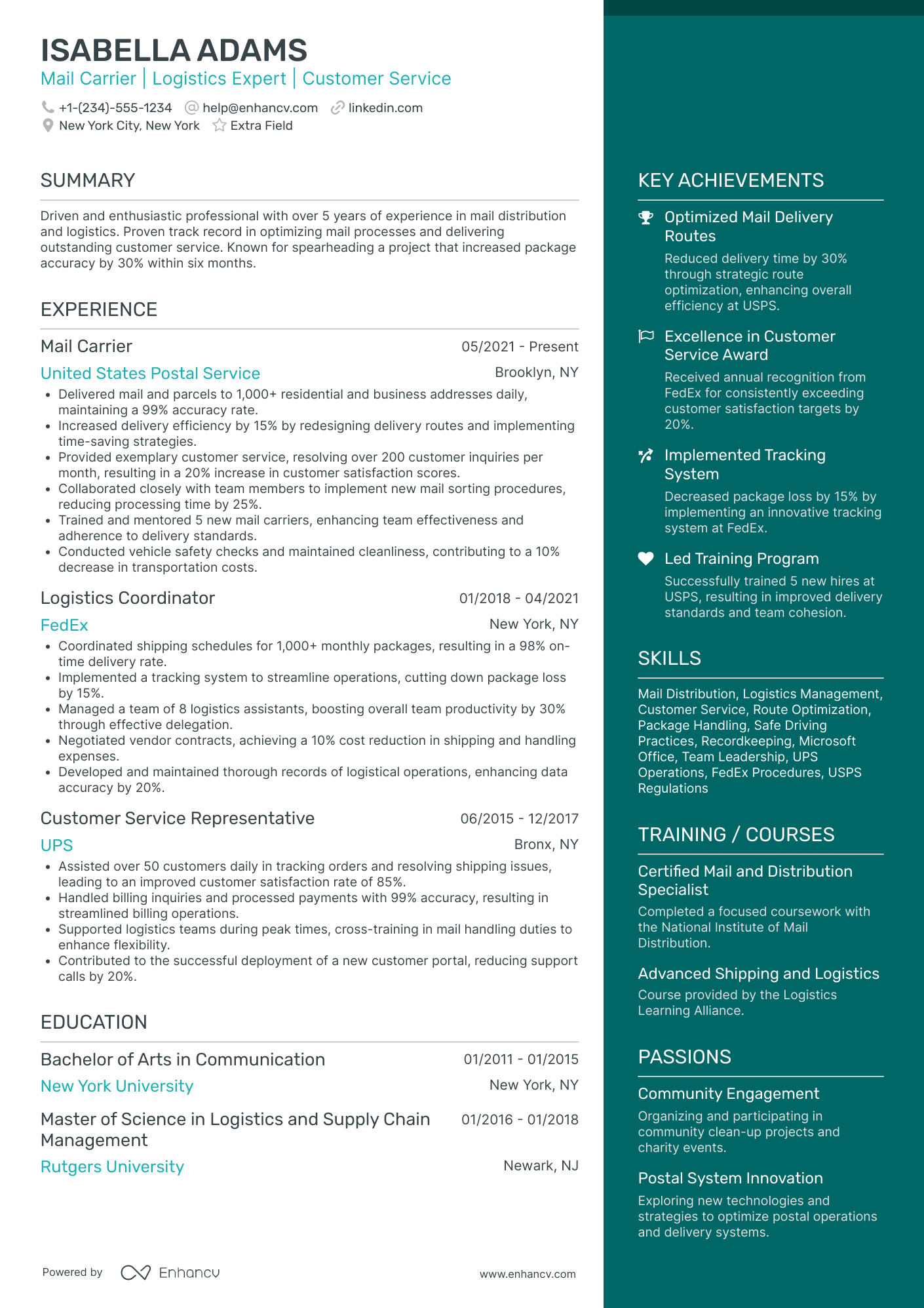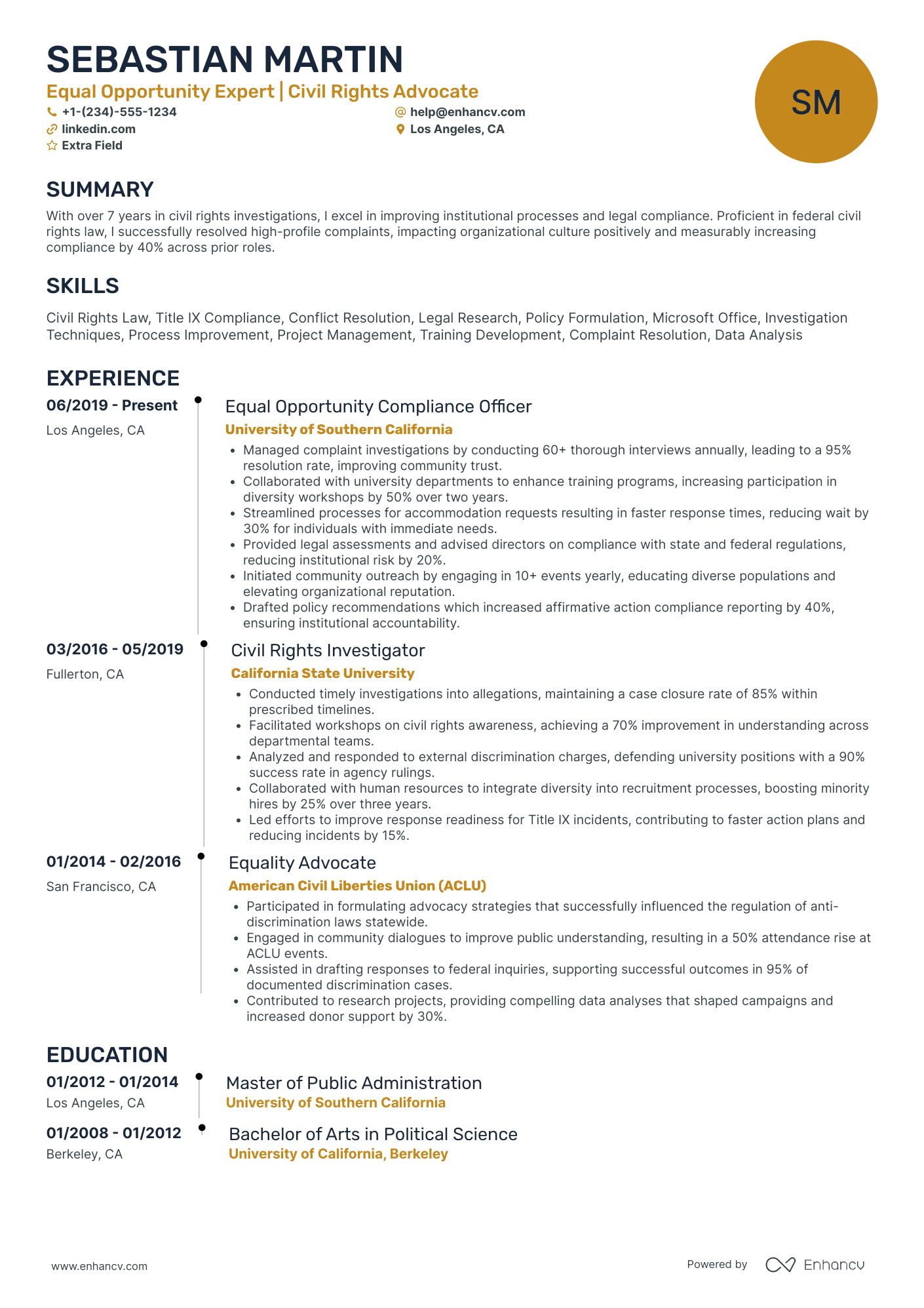Anyone aiming to work in the United States or with US-based companies has to master the format and style of a US resume. International applicants often find it challenging to transition from the application procedures common in their home countries (mainly involving CVs), to the US-style resume. Additionally, US citizens must maintain an updated resume to quickly capitalize on job opportunities.
While resumes and CVs share similarities globally, differences in format, length, and content tailored to industry standards are essential in the US.
American resumes have extra requirements that can mean the difference between getting hired or getting your resume tossed to the side without a second glance.
This guide will help you write a job-winning resume that fits all the US resume standards. Here’s what we’ll cover:
- The importance of adapting your work experience to American recruitment standards and how it simplifies your job search.
- Tips for optimizing your resume with strategic keyword usage.
- Essential sections to include in your resume and additional sections that can strengthen your application.
- How to effectively present your skills in a US-format resume.
- Strategies for selecting the right content for your resume to ensure it’s concise, relevant, and engaging.
Before we begin, consider saving some of these resume tips for later review.
- How to Write a Great Resume
- Resume Tips and Advice
- Canadian Resume Format
- 1800+ Resume Examples
- Resume Styles: The Best Choice for Your Needs
- Why Can’t I Find a Job?
- How to Know If a Job is a Scam?
- Background Check for Employment
- Chat GPT Resume Prompts
- Cover Letter Examples
Let’s dive in.
How to format your resume for the US job market
Compared to European CVs, American resumes are shorter (up to 2 pages) and easier to scan. In her book The Culture Map, Erin Meyer explains that the United States is a low-context culture where "good communication is precise, simple, and clear. Messages are expressed and understood at face value."
We can safely say that these communication specifics carry over into the professional context. If you’re coming from abroad and have a work visa, all you need to do is transfer your experience and achievements to a document that's well-organized and easy to understand.
The first step is to choose the right format for your US resume.
Types of US resumes
In the United States, the resume structure largely depends on how you prefer to list your work history. This will be defined by your level of experience. Below are the three most common formats in a resume:
- Reverse chronological resume: This is the most traditional and commonly used resume format. It lists your work experience in reverse chronological order, starting with your most recent job at the top. It’s the best choice for those with a strong work history and progressive career growth in the same field. It’s also recruiters’ favorite as it allows them to see your career trajectory and longevity in particular roles or industries.
- Functional resume: Also known as a skills-based resume, this format focuses on your skills and abilities rather than your chronological work history. It's particularly useful for people who are changing careers, have gaps in their employment history, or are entering the workforce for the first time. The functional resume emphasizes what you can do and what you have learned, rather than where and when you worked.
- Combination (hybrid) resume: The hybrid layout combines elements of both the chronological and functional resumes. It starts with a section that highlights your skills and accomplishments (similar to a functional resume) followed by a detailed work history in reverse chronological order. This format is beneficial for those who want to showcase specific skills while also detailing their work history.
PRO TIP
Hybrid resumes are best fitted for fields like IT, engineering, science, graphic design, or marketing. They allow you to highlight your practical or technical skills at the forefront.
US resume design
Below are some other crucial components for the overall readability of your document. Again, the idea of clear messaging and precision should be reflected in your entire resume.
- Applicant tracking systems (ATS). 90% of recruiters use ATS to scan applicants’ resumes for keyword counting. ATS checks how many keywords from the job description can be found within your resume, thus filtering out unqualified candidates. This implies that you might have what it takes to get the job, but if you don’t manage to show it on your resume, you can get dismissed by a machine.
- Resume margins: Consider margins as the frame of your professional portrait. The ideal margin size is between 0.5 and 1 inch on all sides. You can play around with this to fit in your content, but be careful. Narrower margins will make your resume look cramped, while a larger size can indicate you don’t have much to say.
- Resume font: Another factor contributing to visual hierarchy, resume fonts are one of the easiest ways to direct and maintain recruiters’ attention on your resume. The best fonts are Lato, Rubik, Arial, Bitter, and PT Serif, size 10-12 pt. They can pass ATS scanners successfully, which is a big concern for today’s job seekers.
- Resume templates: Most people don’t have the time to build a resume from scratch on a word processor. Ready-made templates are a great way to create your professional resume, as they’re already optimized for machine and human scanning. All you need to do is decide how to complete them. Enhancv has a range of templates—single-column, double-column, modern, traditional, and creative—that can suit any type of job or taste.
- Resume length: In the United States, the one-page resume is the preferred format. Two-page documents are reserved for seasoned candidates and C-level executives, but for all other cases, one page should be enough to communicate your strengths clearly and concisely.
- Contact information: Place your details in the resume header and include your name, professional title, email address, a link to your LinkedIn profile or your portfolio, and US phone number. The header can easily go wrong if you put your high-school email address or if you provide a generic title (e.g. Marketing Specialist instead of, say, B2B Marketing Strategist). Your contact information should be as specific and professional as the rest of your resume.
- Resume photo in the US: We advise you to not put your picture on your resume unless specifically requested. This is done to avoid discrimination and bias. Additionally, photos may confuse ATS scanners as some graphic elements would.
- US letter size: Don’t confuse it with the standard A4 print setting. The US letter size is 8.5 x 11 inches and can be pre-determined from the template setting on Enhancv’s resume builder.
- File formatting and naming convention: It’s best to save your resume as a PDF to maintain formatting consistency across different devices and platforms. Name your resume file clearly. Use your full name followed by your title and the word 'resume'. For example, 'AnnaSmith_Architect_Resume.pdf'. This helps hiring managers easily identify and retrieve your file from hundreds of applications.
Is your resume good enough?
Drop your resume here or choose a file. PDF & DOCX only. Max 2MB file size.
Now that we’ve covered the basics, let’s sum up what are the essential elements of a resume when looking for a job in the United States.
The top sections on a US resume
- Professional experience detailing your past roles and achievements.
- A skills section that lists core competencies relevant to the job you’re applying for.
- Education and certifications highlighting relevant academic and professional qualifications.
- A professional summary or objective showcasing your career highlights and skills.
- A projects section showing specific projects related to the role.
Any of these sections should be adapted to the specifics of the role you’re targeting and the job you’re applying for. Of course, you can add or prioritize sections that you think are relevant, just make sure you stay direct and to the point. Don’t hesitate to kill your darlings if what you’re writing doesn’t match the job requirements.
What recruiters want to see on your resume
- Relevant job experience to verify capability in similar roles.
- Specific skills that are essential for performing key job functions.
- Educational background that supports the technical knowledge required for the role.
- Certifications that are industry-recognized and pertinent to the job.
- Achievements that demonstrate past success and potential for impact.
Before we dive into each must-have section separately, let’s outline what you shouldn’t include in a US resume:
What NOT to include in your US resume
- Personal information: Details about your date of birth, social security number, gender, nationality, religion, and marital status can lead to biases.
- A headshot: Unless you are applying for a job where your appearance is directly relevant (e.g., acting, modeling), a photo is unnecessary and can lead to discrimination.
- Salary information: This can be discussed during the interview.
- References: Employers will ask for them if needed.
- Authorization to work in the US: This is required after you receive a job offer.
How to write your US resume experience section
The biggest challenge when crafting your experience section is deciding what to include and what to leave out. For many candidates with extensive experience, this can be very frustrating, but the solution is simple:
Feature only those experiences that are relevant to the job you’re applying for.
First, research the job description and highlight keywords that indicate the main responsibilities, skills, certification requirements, and overall applicant profile. Then, consider which of those you can relate to and make sure you transfer the same words onto your resume.
The work experience section is a great place to feature major keywords, but don’t limit yourself to just this part of the document. Your whole resume should be strategically populated with terms that will make recruiters nod with appreciation.
Here’s the basic resume experience format:
- Job title
- Organization name
- Optional: a short description of the company, especially if it’s a startup or an NGO
- Employment dates and location
- 3-6 bullet points describing your duties and achievements, packed with quantified results.
Look at a resume sample of a well-written experience section:
- •Directed the development and market launch of three electric vehicle models, resulting in a 40% market share increase.
- •Implemented cutting-edge battery technology that extended vehicle range by 25% and reduced charge times by 20%.
- •Negotiated key partnerships with technology providers to enhance vehicle connectivity and autonomous driving capabilities.
- •Oversaw a team of 150+ engineers and developers, fostering a culture of innovation and rapid product iteration.
What’s good about those experience entries?
- Action verbs: Each entry starts with an action verb that enhances the candidate’s profile of someone who drives change within their sector.
- Buzzwords: Carefully selected industry-specific words are a strategic way to boost your application (e.g. market share increase, cutting-edge battery, a culture of innovation). Use those in small doses, as putting too many can backfire.
- Quantified achievements: 3 out of 4 entries provide specific examples of measurable outcomes. This is something you should aim for in your entire resume. Simply listing skills and achievements won’t cut it. Instead, build your credibility by providing concrete evidence for your experience.
Experience is not what happens to you; it's what you do with what happens to you.
Aldous Huxley
How to quantify impact on a US resume
An effective resume doesn’t leave recruiters guessing. That’s why, you should provide numbers, percentages, and measurable outcomes whenever possible. Below you can find a few ideas on how to do that:
- Include percentage revenue growth achieved under your leadership to demonstrate impact on profitability.
- Detail cost savings through efficiency improvements with specific percentages to show financial stewardship.
- Mention customer base expansion figures to illustrate successful market penetration.
- Highlight the increase in market share to show competitive advancement.
- Quantify the reduction in process times to emphasize efficiency gains.
- Report specific figures on capital raised during funding rounds to underline financial acumen.
- State the exact number of patents filed under your guidance to reflect innovation capabilities.
- Provide the numerical increase in shareholder value to showcase business growth impact.
The same applies to entry-level roles or internship candidates. Learn more in the following section.
How do I write a US resume with no work experience
If you’re a first-time job seeker or an international student looking for summer employment in the US, building a resume can be daunting. However, the same strategies described above can help you create a targeted resume that emphasizes your strengths and is optimized for the specific job.
Read or tips for entry-level resumes:
- Focus on еducation: Place your education section near the top of your resume, especially if you're currently enrolled in or have recently graduated from school. Include your major, any relevant coursework, academic achievements, and projects that demonstrate skills applicable to the job.
- Skills section: Create a robust skills section where you can list technical skills (like software proficiency), languages (if bilingual or multilingual), and soft skills (like communication and problem-solving). These are crucial in demonstrating you can handle job duties.
- Volunteer work and extracurricular activities: Include any volunteer positions, clubs, or sports involvement, particularly leadership roles or contributions that show teamwork, leadership, and dedication.
- Internships and part-time jobs: Even if they aren't in your desired field, part-time jobs, internships, or temporary roles can prove your work ethic and ability to balance commitments. Describe these roles focusing on transferable skills.
- Objective statement: Start your resume with a resume objective that outlines your goals, skills, and what you bring to a potential employer. This section can hook the recruiter by showing your enthusiasm and how your educational background aligns with the job.
- Optional sections: If relevant, add sections like "Certifications," "Professional Affiliations," or "Awards and Honors" to further validate your qualifications or involvement in the field.
There are many other elements you can focus on to impress the job recruiters and land a job interview. Read our article, Resume Without Work Experience, for more tips.
How to list skills on your american resume
The key skills for a US resume in 2025 are largely shaped by the current job market. Factors like the post-COVID landscape, ongoing global conflicts, and potential economic downturns are significantly influencing employment opportunities.
A recent article in Reader’s Digest highlights this shift: “From tech jobs to health care opportunities to eco-friendly careers, the list is diverse in terms of interests, skills, and education requirements. [...] But according to the experts, they’re recession-proof careers, and some of them are even jobs that might make you a millionaire.”
So, what are the 10 most wanted jobs in the US right now and how do they define the most in-demand skills? Here’s a breakdown.
- Data Scientist: Businesses across various sectors need professionals who can analyze complex data sets to inform decision-making processes.
- Cybersecurity Specialist: With increasing digital transactions and data, the demand for cybersecurity experts to protect against threats is critical.
- Registered Nurse: The healthcare industry continues to experience a robust demand for nurses due to an aging population and the ongoing global health challenges.
- Medical Technologist: Professionals who can handle patient samples and maintain laboratory equipment are crucial in the healthcare field.
- Truck Driver: The logistics and delivery sectors are growing, necessitating more drivers as online shopping becomes increasingly prevalent.
- Translator: As businesses operate on a global scale, the need for skilled translators to bridge communication barriers is significant.
- Physical Therapist: An increasing number of individuals seeking rehabilitation services makes this a rapidly growing field.
- Software Developer: The tech industry's expansion drives the demand for developers to create and maintain software solutions.
- Digital Marketing Specialist: With the rise of digital commerce, experts in digital marketing are crucial for businesses to reach their target audiences effectively.
- Financial Advisor: Economic uncertainties have led to a heightened need for professional financial planning and advice.
Based on these insights, we’ve compiled a list of the top technical skills that you can include in your resume.
The best hard skills for your US resume
- Data analysis
- Project management
- Software development
- Cloud computing (AWS, Azure)
- Machine learning
- Cybersecurity
- Database management (SQL, NoSQL)
- Business intelligence (BI) Tools
- Web development (HTML, CSS, JavaScript)
- Mobile app development (iOS, Android)
- Network administration
- CAD Software
- Financial modeling
- CRM software (Salesforce)
- ERP systems (SAP, Oracle)
- Artificial intelligence
- Blockchain technology
- Graphic design software (Adobe Creative Suite)
- Video editing software
- Automation tools (Ansible, Puppet)
Technical skills are part of the hard skills group and are normally displayed in a dedicated section on your resume. Make sure you list those that are highly relevant to the position you’re applying for.
Unlike hard skills, which you acquire through training and work experience, soft skills are developed through communication with others. However, remember that they’re best demonstrated when actually implied and supported with evidence.
For instance, instead of listing problem-solving and teamwork in an isolated section, you can showcase these skills in your experience entries. Like so: “Managed project timelines and coordinated with cross-functional teams to align project goals with business objectives, successfully delivering the project 2 weeks ahead of deadline and under budget by 15%.”
Below are some of the top skills that American recruiters appreciate on a resume:
The best soft skills for your US resume
- Communication
- Leadership
- Empathy
- Adaptability
- Problem-solving
- Conflict resolution
- Team collaboration
- Creativity
- Time management
- Attention to detail
- Emotional intelligence
- Persuasiveness
- Resilience
- Accountability
- Active listening
- Decision-making
- Interpersonal skills
- Stress management
- Cultural awareness
- Negotiation skills
How to list your education and certifications on a US resume
When creating the education section of your US resume, focus on relevance and only include details pertinent to the job you're applying for. Here you can mention any ongoing or incomplete educational pursuits to demonstrate your commitment to continuous learning. This approach keeps your resume clear and organized and showcases your qualifications effectively for potential employers.
Education should be listed in reverse chronological order, beginning with the most recent qualifications and following this order:
- Degree or certification obtained
- Name of institution
- Graduation date or expected completion.
- GPA if it's notably high, or honors received (optional)
- Relevant coursework demonstrating your contributions
This is how a registered nurse’s education section can look:
- •Specialized in pediatric care and completed relevant clinical rotations at UCSF Medical Center.
When listing certifications on a US resume, you should keep in mind two things. Firstly, they need to be relevant to the job you’re applying for.
Secondly, if you’re an international applicant for a US job, be cautious of the following:
- Recognition and equivalency: Verify that your certifications are recognized in the United States or have an equivalent that is appreciated by US employers.
- Accreditation: Ensure that the institution or organization that granted your certification is accredited or recognized by relevant US authorities. This can significantly impact the credibility of your qualifications.
- Translation and conversion: If your certification is not in English, it should be professionally translated. Also, consider converting any metrics (like grades or scores) to a format familiar to US employers.
- Currency and validity: Indicate if your certifications are current, especially for roles that require up-to-date knowledge and skills. Some certifications require periodic renewal or continuing education, which should be clearly mentioned.
Next, list the certifying body and the date, and make sure current certifications are highlighted, especially if they require renewal.
Here are some of the most widely recognized certifications you can see on American resumes.
The best certifications for a professional US resume
Enhancv’s resume builder offers the flexibility to customize your resume by adding and organizing sections as you prefer. If you have more than two certifications that are relevant to the job you're targeting, it's wise to allocate a specific section for them on your resume. This approach is appreciated by both applicant tracking systems ATS and recruiters.
How to write your US resume summary or objective
You might wonder why we leave this section for the end of each guide. It’s simple. It’s best to write your resume summary or objective when you’ve finished putting together your experience and training background. This allows you to quickly summarize the key points of your career and adjust them to the specific role you’re applying for.
So, what’s the difference between a resume summary and an objective statement?
In the United States, there are two types of personal statements that provide employers with a brief overview of your qualifications and career goals.
The resume objective is 1-3 sentences long and focuses on how you’re going to add value to the specific job or company you’re applying for. It’s more suitable for candidates with less than 3 years of experience, career changers, and individuals with large career gaps.
Here’s an example of a resume objective for an aspiring professional translator.
Here’s why this is a good resume objective:
- Sentence 1: The objective starts by framing the candidates’ profile. It clearly states a specialization in Spanish to English translations, highlighting the candidate’s specific expertise.
- Sentence 2: It aligns the graduate’s educational background and certification with their career aspirations, demonstrating relevance to professional goals.
- Sentence 3: By expressing a desire to contribute to the success of a specific, well-regarded firm, the objective showcases the candidate’s intention to apply their skills in a meaningful and impactful way, appealing to potential employers looking for dedicated professionals.
Resume summaries differ slightly in that they provide more room—up to five sentences—to detail your key skills, achievements, and contributions to past employers. They also serve as an excellent platform to highlight notable successes or certifications, particularly those mentioned in the job description.
Let’s look at a well-written data analyst’s resume summary.
Now, let’s see what makes it a good summary:
- Use of strong adjectives and action verbs: The summary starts with detail-oriented, an adjective that sets a professional tone and highlights a crucial skill for a data analyst. Action verbs like leveraging, analyzed, developed, and creating, show proactive involvement in key projects and tasks.
- Quantified metrics: The summary includes specific, quantified achievements such as increased revenue by 15% year-over-year. They provide concrete evidence of the candidate's impact and capability.
- Key skills and certifications: It mentions proficiency in SQL, Python, and Tableau, which are critical tools for a data analyst. The mention of an "Advanced Data Science" certification from IBM further strengthens the candidate’s qualifications.
- Absence of personal pronouns: The summary avoids the use of personal pronouns, which helps maintain a professional and focused tone. This style is often preferred in resume writing as it directs attention to the candidate's skills and achievements without personal bias.
- Comprehensive yet concise: This comprehensive approach ensures that a potential employer quickly grasps the candidate’s qualifications and potential value to the organization.
No matter how far in your career you are, make sure you write a concise and specific personal statement.
Additional sections to include in a US resume
We talked a lot about the importance of being direct and specific when crafting a resume in the United States. However, this doesn’t mean you can’t include any further sections that are relevant to the position you’re applying for. Here are a few suggestions:
- Languages: Proficiency in multiple languages can be a significant advantage in many roles, especially in international companies or in customer service positions.
- Projects section: Particularly for roles that involve project management or software development, a projects section can showcase specific examples of what you have accomplished, detailing the scope and the outcome of the projects.
- Hobbies and interests: While not always necessary, this section can help humanize you as a candidate and possibly connect on a personal level with the hiring manager.
- Volunteer work: This can prove your commitment to community, your leadership skills, and your willingness to take on responsibilities outside of professional work.
- Professional affiliations and memberships: Being part of professional organizations can show your engagement in the industry and your ongoing commitment to professional development.
- Publications: If you have authored or contributed to professional publications, listing these can enhance your credibility and establish you as an expert in your field.
- Awards and honors: Including any relevant awards or recognitions you have received can highlight your excellence and competitiveness in your field.
Key takeaways
Understanding the nuances of US resume standards is crucial for both international applicants and US citizens seeking to optimize their job prospects. Here are the key takeaways from our comprehensive guide on mastering the US resume format:
- Adapt to American standards: Tailoring your experience to meet American recruitment criteria simplifies the job application process and increases your visibility among recruiters.
- Optimize with technology: Utilize strategic keyword usage to ensure your resume stands out and aligns with the job description, increasing your chances of being noticed.
- Include essential sections: Insert vital resume sections such as professional experience, skills, and education. Adding sections like certifications and projects can further enhance your resume by showcasing relevant qualifications and achievements.
- Avoid specific elements: There are things you should not put in your US resume, such as a photo, detailed graphics, fancy fonts, or personal information. This is done to ease ATS scanning and avoid discrimination.
US resume examples
By Role






